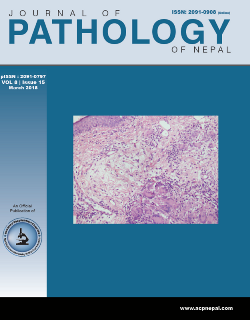Clinico-histological analysis of non-neoplastic lesions of cervix
DOI:
https://doi.org/10.3126/jpn.v8i1.19453Keywords:
Cervicitis, Cervix, Histopathology, HysterectomyAbstract
Background: Cervix from hysterectomy constitutes the majority of gynecological specimens and includes genital infections to invasive carcinoma. These cervical lesions are the source of morbidity and mortality in women. But, there are many benign lesions which appears malignant on gross and microscopy so, misdiagnosed. Hence, clinical and histopathological examination of cervix is required for proper diagnosis and to exclude misdiagnosis.
Materials and Methods: This is a retrospective study conducted in Histopathology section of Pathology Department of Rural Institute of Medical Science and Research, Saifai, Etawah (U.P) India from 1 January 2008 to 31 December 2015 on 1544 hysterectomy specimens. Histopathology examination was the diagnostic tool. Cervical pathologies in hysterectomy specimens were evaluated grossly and microscopically and correlated with clinical findings.
Results: Vaginal discharge was the most common clinical complaint (43.00%), followed by bleeding complaints (23.38 %). Grossly normal cervix was seen in (32.51 %) and nabothian follicles were found in (20.07%). On histopathology examination, chronic cervicitis was the most common pathology (79.66 %).
Conclusion: Cervix is site of shades of grey lesions that include cervical dysplasia to malignancy. But majority of cervical pathologies are benign lesions. However, many times benign lesions are misdiagnosed as malignant. Histopathological examination along with clinical findings is mandatory for the early and accurate diagnosis. Health camps along with cervix screening and educational awareness program should be carried out.
Downloads
Downloads
Published
How to Cite
Issue
Section
License
This license enables reusers to distribute, remix, adapt, and build upon the material in any medium or format, so long as attribution is given to the creator. The license allows for commercial use.




